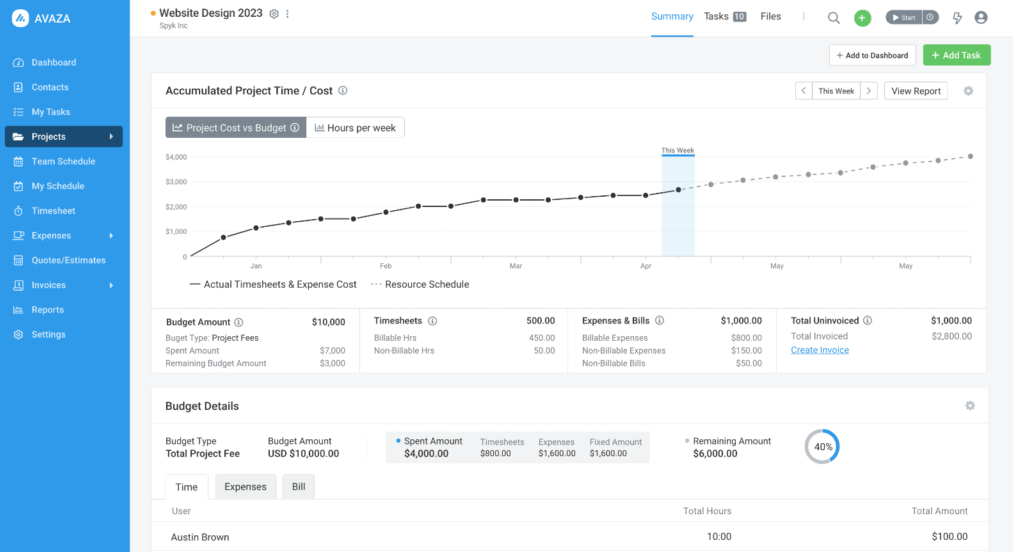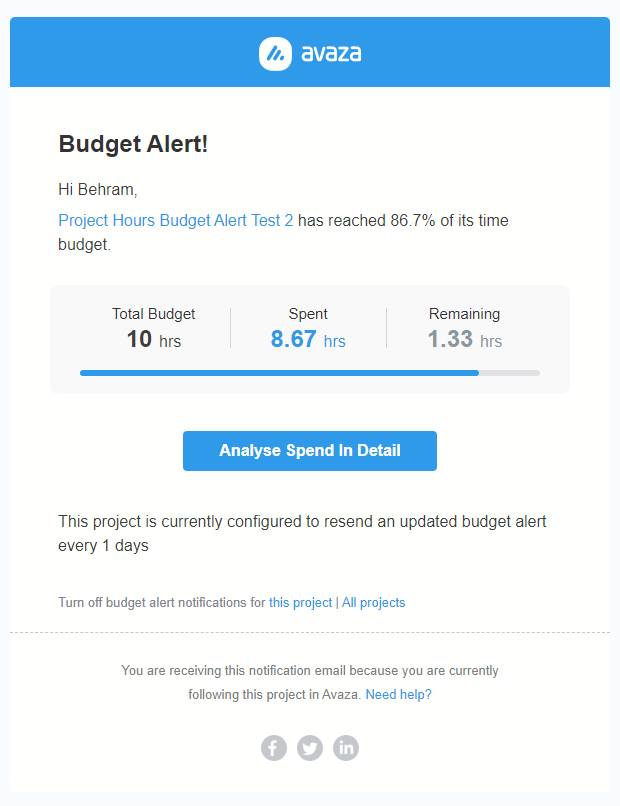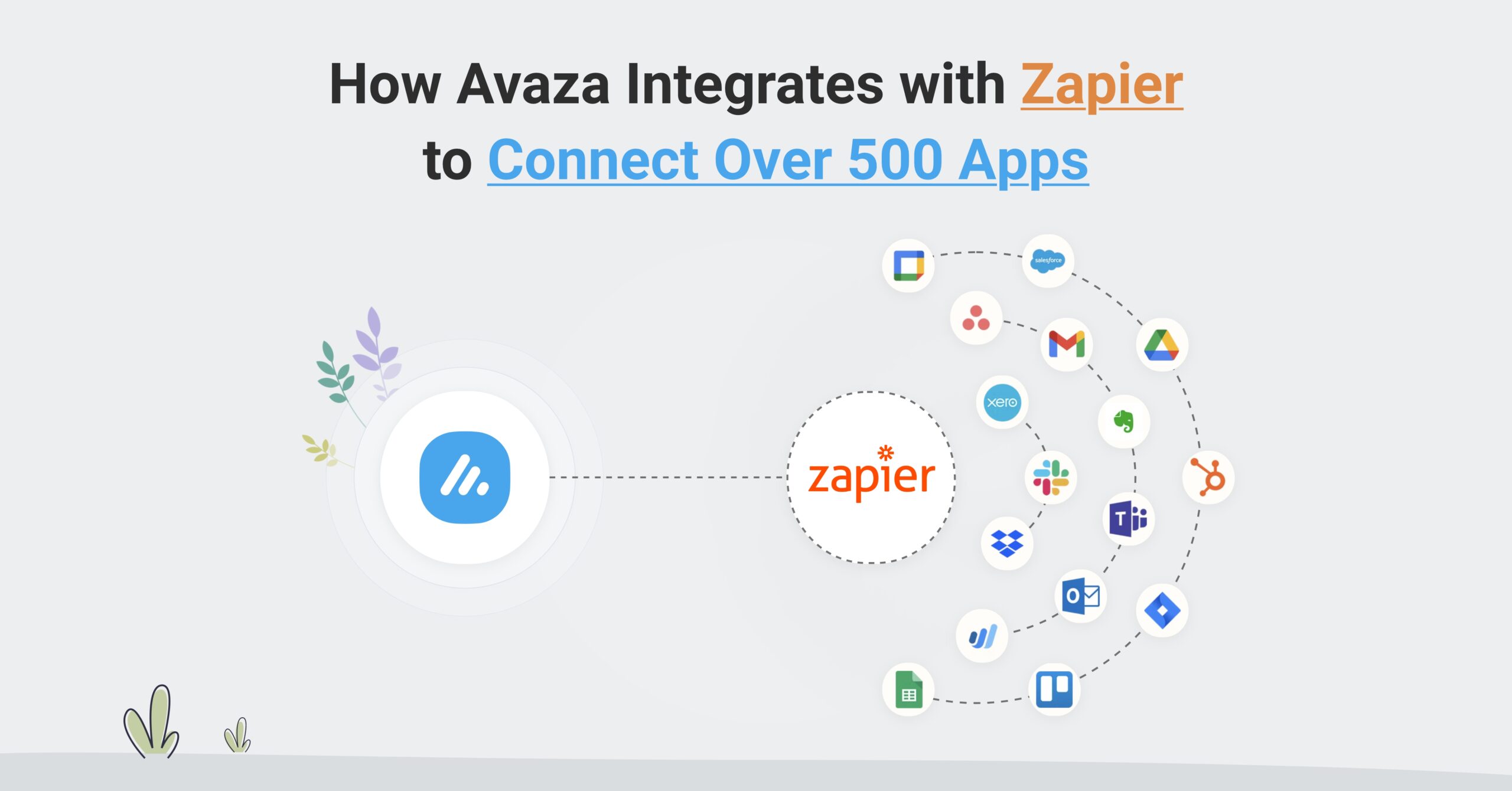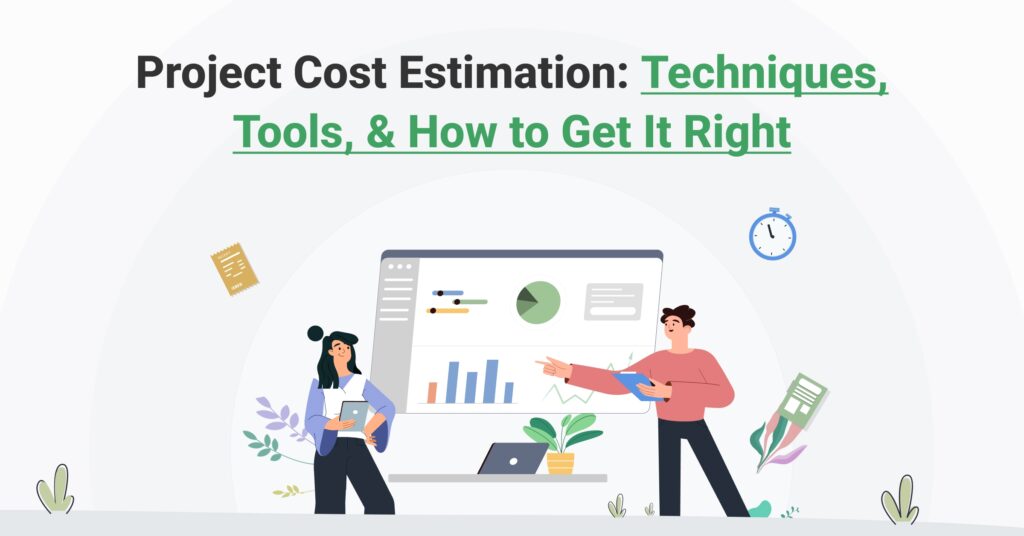Table of Contents
Project Cost Estimation: Techniques, Tools, & How to Get It Right
In project management, cost estimation is the discipline that helps teams translate scope into numbers, predicting what it will take in dollars, time, and resources to deliver a project successfully.
At its core, project cost estimation involves evaluating knowns and unknowns using methods like bottom-up detailing, analogous benchmarking, or parametric modeling to generate realistic forecasts. These aren’t just academic exercises; they shape whether projects stay profitable, especially for margin-sensitive service businesses such as IT consultancies, engineering firms, and construction teams managing fixed-price or retainer engagements.
When leaders ask, “How much will this project cost?” they’re not just looking for a number, instead, they’re asking for confidence, accountability, and financial foresight.
Accurate cost estimation directly affects business outcomes.
- Underestimate, and you risk eating into margins or facing mid-project funding crises.
- Overestimate, and you risk losing bids or internal support.
The consequences are especially steep in service environments where profit margins are tight and capacity planning is delicate. Common culprits behind budget overruns include scope creep, vague assumptions, and overreliance on fragmented tools like siloed spreadsheets.
Without a unified estimation process tied to real-time tracking systems, small errors snowball into major budget deviations.
Tools like Avaza tackle this issue head-on by linking budgets to time tracking, resource planning, and expense data—creating a living estimate that adapts as the project evolves.
But even before execution begins, the cracks in traditional estimating often reveal themselves.
Warning signs like wild swings in estimates between team members, unclear contingency logic, or reliance on gut feel signal that models are flawed. Teams frequently struggle with inconsistent inputs, poor historical data, or confusion between buffer types like contingency and management reserve.
In these cases, cost estimation becomes more guesswork than governance. Solving this requires more than just a template. It demands a shift to systematic, transparent, and collaborative workflows that elevate both the accuracy and trust in the numbers.
This guide will help you get there, whether you’re refining your bottom-up estimates or scaling estimation practices across portfolios.
Why Project Budgets Blow Up
No matter the industry, whether you’re managing IT implementation, engineering builds, or multi-phase consulting work, project budgets have a habit of unraveling. Despite starting with seemingly solid estimates, cost overruns remain a pervasive issue, with nearly 70% of projects exceeding their initial budgets.
This section explores why that happens. Here, we’ll unpack the key failure modes, from estimation errors to siloed tooling, and provide a practical lens for project managers, financial controllers, and operations leaders to spot red flags early.
Key Failure Modes (root causes, statistics)
Projects blow past their budgets not necessarily due to lack of effort, but often due to foundational cracks in the estimation process itself. Inaccurate forecasts are frequently baked in from the start, especially when teams default to optimistic assumptions or lack historical cost data.
Research from McKinsey and PMI reveals that cost overruns occur in nearly 79% of large-scale projects, and fewer than one-third of organizations report delivering projects on or under budget. These statistics are especially alarming for fixed-price service teams, where the margin for error is razor-thin.
Several root causes emerge consistently.
First, poor scope definition leads to underestimation.
Teams estimate based on what’s visible upfront, not what’s likely to evolve.
Second, estimation methods are often misapplied—for example, using analogous estimates for complex projects where bottom-up or parametric models would be more accurate.
Third, there’s a tendency to exclude contingency buffers or miscalculate reserves, resulting in zero wiggle room when reality strikes.
And finally, accountability is fragmented.
Estimation becomes a handoff instead of a cross-functional effort tied to execution metrics. Unless organizations align their methods, tools, and people around a unified estimation process, budgets will remain more hopeful than reliable.
Fragmented Tools & Visibility Gaps
Budget overruns don’t just stem from bad math, they often stem from bad systems.
Many project teams still rely on disjointed tools. For example, estimation happens in one spreadsheet, actuals are tracked in another, and resource allocations live in a separate scheduling app. This fragmentation creates blind spots and delays in visibility, preventing real-time course correction.
For margin-sensitive service businesses, that’s a recipe for budget slippage, especially when costs are creeping up but no one sees the full picture until it’s too late.
Compare this with unified work management platforms like Avaza, where cost estimates are directly tied to time tracking, resource planning, and expense logs. When data flows seamlessly across project components, you don’t just estimate once, instead, you continuously refine your forecast as inputs evolve.
For example, if a consultant logs more hours than expected or a milestone slips, Avaza can trigger real-time project budget alerts and automatically adjust projections. In contrast, spreadsheet-based workflows often involve manual updates, version control headaches, and missed dependencies (all of which erode confidence in the numbers).
Nowadays, relying on siloed tools is like trying to steer a ship with one hand on the wheel and the other on a broken compass.
Typical Estimation Challenges
Even experienced project teams face friction when trying to produce accurate cost estimates because estimation is as much about coordination and context as it is about numbers.
In service-based businesses, the pressure to “quote fast” often overrides the discipline to estimate right. This results in flawed assumptions, missed risks, and incomplete inputs that ultimately sabotage budget fidelity.
Here are the most common challenges teams encounter:
- Inconsistent estimation methods across departments: One team uses bottom-up, another guesses based on last year. This inconsistency leads to misalignment and integration issues.
- Lack of historical data or benchmarking: Without a baseline, estimators operate on intuition, increasing variance and reducing accuracy.
- Poor collaboration during planning: Siloed workflows mean estimators don’t loop in delivery leads or finance early enough, which leads to blind spots.
- Confusion over buffer types: Teams often conflate contingency with management reserve or skip them entirely, underestimating risk exposure.
- Limited tool integration: Estimates are made in static spreadsheets that don’t talk to resource or time-tracking systems, creating a disconnect between forecast and reality.
- Pressure to “win the bid”: Sales or executive pressure to keep costs low encourages sandbagging or ignoring known risks, which backfires during delivery.
Addressing these challenges isn’t just about better templates, it’s about shifting to a consistent, transparent, and data-integrated workflow.
Tools like Avaza unify estimation with execution, allowing teams to close the loop between forecast, effort, and actuals—all while embedding flexibility for real-world change.
Sign Up for FREE to manage your project costs with ease!
Fixing Project Cost Estimation
Before you can tighten budgets and protect margins, you have to replace ad-hoc “guesstimates” with a repeatable, data-driven process that everyone (from project managers to CFOs) trusts.
Fixing cost estimation isn’t just about picking a better spreadsheet, it’s about establishing a disciplined workflow, selecting the right estimating techniques for each project, hard-wiring risk buffers, and keeping estimates alive by connecting them to real-time time-and-expense data.
The following section walks you through that transformation step by step.
How Do I Build a Step-By-Step Workflow For Project Cost Estimation? Six-Step Workflow
A robust workflow moves your team from rough concept to board-ready budget in six deliberate stages:
Step | What It Looks Like | Why It Matters |
1. Scope Definition & WBS Draft | Break the project into a clear work-breakdown structure (WBS) with deliverables, tasks, and ownership. | A granular WBS is the backbone for bottom-up estimating and reduces “hidden” work that blows budgets later. |
2. Historical Data & Benchmark Review | Pull analogous data from past projects, Avaza reports, or industry databases to set baseline unit costs and productivity rates. | Establishes reality-based starting points, countering optimism bias. |
3. Method Selection & Hybrid Estimating | Choose bottom-up for critical work packages, parametric ratios for repeatable units, and analogous numbers for early-stage or low-material tasks. | Tailors effort to risk: low-detail areas don’t bog down the schedule, high-risk areas get deep dives. |
4. Three-Point & Risk Adjustment | For each major cost driver, capture optimistic, most-likely, and pessimistic values; run a PERT or Monte Carlo analysis if stakes warrant. | Quantifies uncertainty and produces a probability-based estimate instead of a single point that will almost certainly be wrong. |
5. Contingency & Management Reserve Layering | Apply a calculated contingency (linked to risk register) at the work-package level; maintain a separate management reserve at the portfolio level. | Ensures buffers are visible, defensible, and not arbitrarily trimmed during executive reviews. |
6. Live Linking & Governance | Import the approved estimate into Avaza, map it to time-tracking and project expense codes, and set variance thresholds with automated alerts. | Transforms your estimate from a static document into a living baseline that flags overspend before it spirals. |
Pro tip: Document every assumption in the estimate-of-record and attach source references (quotes, historical cost reports, vendor rate cards). Avaza’s file-attachment field inside each budget line keeps that “why” one click away, simplifying audits and change-order negotiations.
Project Cost Estimation Methods
In this section, we’ll discuss:
- Traditional Techniques (Bottom-Up, Analogous, etc.)
- Modern, Data-Driven Approaches
- Choosing Analogous vs Parametric vs Bottom-Up
1. Traditional Techniques (Bottom-Up, Analogous, etc.)
Traditional cost estimation techniques have been foundational in project management for decades. They largely rely on human expertise, historical analogies, and structured breakdowns of project work. The primary traditional methods include:
- Bottom-up estimating breaks projects into tasks, estimating each in detail and rolling them up. It’s accurate but time-intensive and best for well-defined scopes.
- Top-down (analogous) estimating uses previous similar projects as a reference, adjusting for scope or complexity differences. It’s fast and useful early on but less precise due to its reliance on expert judgment and historical relevance.
- Parametric estimating calculates costs based on measurable units like cost per square foot or per user (using historical benchmarks). It balances speed and accuracy, though it assumes consistent cost behaviors.
- Three-point estimating accounts for uncertainty by combining optimistic, most likely, and pessimistic cost scenarios, often using weighted averages (e.g., PERT). It adds a risk-aware lens to other methods.
- Expert judgment relies on experienced professionals to estimate costs based on prior knowledge. While fast, it can introduce bias and inconsistency if not paired with data-driven methods.
2. Modern, Data-Driven Approaches
Modern project cost estimation enhances traditional techniques with AI, big data, and cloud-based tools to overcome human bias, inconsistency, and delays. The modern methods are:
- AI and machine learning analyze historical project data to predict costs based on factors like size, scope, and risk, thus, producing more accurate, dynamic estimates over time. These models uncover hidden cost drivers and automate Cost Estimating Relationships (CERs), improving consistency.
- Big data and predictive analytics integrate real-time inputs like labor rates, material costs, or supply chain changes, allowing continuous re-forecasting. Risk modeling, such as Monte Carlo simulations, generates cost ranges and probability distributions to support informed budgeting and buffer decisions.
- Modernized parametric and analogous estimating uses large-scale data mining to refine cost-per-unit metrics, ensuring estimates are statistically grounded and repeatable. AI applies logic uniformly, while human experts validate context-specific nuances.
- Cloud-based estimation platforms connect scope, schedule, and cost in a shared system, replacing isolated spreadsheets with collaborative, version-controlled environments. This integration improves traceability, transparency, and stakeholder trust.
In short, modern estimation is faster, more accurate, and better suited to complexity but it still depends on quality data and experienced oversight.
3. Choosing Analogous Vs Parametric Vs Bottom-Up
Think of the three core estimating techniques as tools on a sliding scale of speed versus precision and pick the one (or mix) that matches your project’s maturity, data quality, and risk profile.
1. Analogous (Top-Down) Estimating – Fast, Low-Definition
Reach for analogous estimates when you’re in the ideation or proposal stage, working with sketchy requirements, or racing to give leadership a “ballpark” within hours.
If your IT services firm just delivered a $150k Salesforce implementation and a new prospect’s scope looks ~20% larger, you can clone the finished Avaza project, tweak scope factors, and generate a quick $180k top-level estimate.
Analogous works best when you have a library of similar, recently completed projects and stakeholders understand the resulting figure may swing ±30 % once details firm up.
2. Parametric Estimating – Balanced Speed & Accuracy
Choose parametric when you have reliable unit metrics (cost per square foot, cost per API endpoint, cost per engineering hour) but don’t need the granularity of bottom-up.
A construction PM might apply $220/sq ft to a 10,000 sq ft office build; a consulting firm might model $1,200 per user story.
Parametric shines for repeatable, measurable work packets and lets you re-forecast instantly by adjusting quantities in Avaza’s custom rate table. Accuracy typically lands in the ±15 % range if your historical data is rock solid.
3. Bottom-Up Estimating – Slow, High-Definition
Deploy bottom-up when scope is fully defined and risk tolerance is low, for example, a fixed-price ERP rollout or a GMP construction contract. You’ll break every deliverable into tasks, assign resource hours, materials, and vendor quotes, and roll them up.
In Avaza, this means itemizing each task, attaching supporting quotes, and letting the platform sum labor, materials, and contingency in real time. Expect ±5-10 % accuracy, but budget ample estimation time and subject-matter reviews.
Decision shortcut:
- Clarity low, bid due tomorrow → Analogous
- Clarity medium, repeatable units → Parametric
- Clarity high, margin risk high → Bottom-Up
Most successful teams blend these methods:
- Start with analogous to size opportunity cost.
- Refine high-risk modules with parametric ratios.
- Finish critical path tasks with bottom-up granularity.
Avaza’s budget workspace supports this hybrid approach by letting you tag each line item with its estimating method, so stakeholders can see where numbers are solid and where they’re still directional.
Top Project-Cost-Estimation Tools (2025)
Project leaders are ditching version-splitting spreadsheets for cloud platforms that keep estimates, schedules and actual costs in the same live database.
The five tools below dominate that shift in 2025.
Each offers a different blend of industry focus, automation and governance, so you can match the platform to your project mix rather than forcing every job into an Excel grid.
1. Avaza — Real-Time Estimating & PSA for Margin-Sensitive Service Teams

Avaza brings estimates, schedules, time, expenses and invoices into one live workspace, giving consultancies, creative agencies and IT service firms a single source of truth for project profitability.
It’s already trusted by more than 60,000 businesses in 150 countries—proof it scales from boutique studios to multi-office firms.
Why do project leaders choose Avaza?
- Purpose-built budget types. Choose Project Fee, Project Hours, Person Hours or Category Hours, so every estimate matches the way you price work instead of forcing you into a one-size spreadsheet.
- Live actuals on every line item. When a consultant logs time or a receipt, the cost dashboard updates instantly—no exports, re-imports or manual reconciliations.
- Proactive budget alerts. Email or in-app notifications fire the moment you hit any percentage you define (50%, 80%, or a custom threshold), giving teams time to course-correct before margins vanish

- Deep accounting integrations. Out-of-the-box connectors sync data with QuickBooks, Xero and 500+ other apps via Zapier, so finance sees the same numbers your PMO does.

- Proven results. ThinkPlace, a 200-person consultancy, reports that unified time, expense and scheduling in Avaza “saved our operations team a lot of time… the full-on impact is huge.”
Ready to replace scattered spreadsheets with real-time insight?
👉 See Avaza plans & start free.
2. ProEst — Construction Estimating & Digital Take-offs
ProEst (now part of Autodesk Construction Cloud) gives builders a single workspace for cost databases, 2-D/3-D digital take-offs, bid-day analysis and polished proposal reports. Because estimated data, drawings and subcontractor quotes live together in the cloud, teams get a “single source of truth” that improves bid accuracy and reduces rework .
It is best suited to material-intensive projects where unit-rate libraries and RSMeans cost books are critical.
3. Oracle Primavera P6 — Integrated Cost + Schedule for Capital Projects
Primavera sits at the enterprise end of the spectrum, marrying critical-path schedules with cost-codes and cash-flow curves. The integrated cost-and-schedule manager ties Unifier cost sheets to work-breakdown structures so owners can see how every scope change hits both time and money—ideal for mega-projects subject to tight governance .
Expect a steeper learning curve, but unrivalled depth for EPC, infrastructure and government portfolios.
4. Deltek Vantagepoint — Phase-Based Estimating for A&E and Gov-Contractors
Vantagepoint evolved from Deltek Vision into a project-based ERP that lets architecture, engineering and professional-services firms roll estimates into resource plans, timesheets and percent-complete billing. Custom dashboards surface margin risk early, while the CRM and proposal modules keep pipelines and estimates in one system.
Recent 2025 releases even add an AI assistant (“Dela”) that builds contact or activity records from natural-language prompts .
5. Forecast — AI-Powered PSA for Digital Teams
Forecast applies machine learning to past work patterns to auto-scope new projects, match resources and flag schedule or budget risks before they bite. Its PSA suite unifies project, resource and financial data so managers get real-time margin control without hopping tools . Budget-management screens show where you’re tracking against plan, and AI nudges suggest reallocations when utilisation or spend drifts.
It’s especially popular with agencies and SaaS implementation teams that juggle dozens of concurrent, fast-moving projects.
Avaza Vs Excel: Side-by-Side Comparison
Question | Excel Templates | Avaza Budgeting |
Setup time | Download a file, copy-paste line items, fix broken formulas. | Create a project and launch the Budget tab—pre-built columns, roll-ups, and tax logic are ready to go. |
Collaboration | One user at a time (or version-splitting chaos). | Real-time multi-user editing with permission controls—no “V7-final-final.xlsx”. |
Data integrity | Formula errors and cell overrides are hard to spot. | Locked budget formulas and audit history track every change automatically. |
Live actuals | Manual re-entry from timesheets and receipts. | Hours and expenses flow in instantly from Avaza expense tracking, updating variances in real time. |
Risk buffers | Percentages typed into a spare column. | Dedicated Contingency and Management Reserve fields, plus color-coded consumption bars. |
Alerts & governance | None—overruns surface at month-end. | Configurable budget alerts ping PMs at 50%, 80%, or hard-limit thresholds. |
Roll-up reporting | Pivot-table gymnastics. | One-click project profitability and portfolio dashboards. |
Bottom line: Excel is fine for a quick back-of-napkin estimate, but once real money and multiple stakeholders are involved, Avaza’s unified budgeting workspace eliminates hidden errors, automates variance tracking, and keeps decision-makers in the loop.
Frequently Asked Questions (FAQs)
What warning signs indicate my estimation model is inaccurate?
Frequent budget overruns, inconsistent estimates between team members, vague assumptions, and reliance on outdated templates suggest your model is flawed. If your estimate lacks risk buffers, historical references, or fails to match real-time data from time and expense tracking, it’s likely no longer reliable or defensible.
Which cost-estimation technique is best for fixed-price vs. time-and-material projects?
Use bottom-up estimating for fixed-price projects to ensure accuracy and risk coverage. For time-and-material engagements, parametric or analogous methods offer faster, scalable forecasts based on unit rates or past projects. Align technique with contract type, project clarity, and margin exposure to balance speed and control.
How does improved estimation impact project profitability and cash flow?
Accurate estimates reduce unexpected costs, prevent overcommitment, and protect margins, especially in fixed-fee contracts. By forecasting cash needs more precisely, companies can align billing milestones, manage reserves, and avoid liquidity crunches. Better estimates mean fewer surprises, smoother operations, and more predictable financial outcomes over the project lifecycle.
How do clients perceive value when cost estimation is transparent?
Clients associate transparency with trust. When they see detailed estimates tied to scope, assumptions, and live tracking, they feel informed and in control. This clarity reduces disputes, accelerates approvals, and strengthens long-term relationships, turning your cost estimate from a number into a credibility builder.
Final Say,
Project cost estimation isn’t a “fill-in-the-blank” exercise!
It’s a strategic discipline that separates projects that merely launch from those that land on-time and on-budget. By:
- Grounding every number in a well-defined scope and historical benchmarks,
- Choosing the right blend of estimating methods (analogous, parametric, bottom-up) for each phase,
- Layering risk-based contingencies instead of flat percentages, and
- Keeping estimates live— continuously updated in the same PSA or PPM tool that tracks actuals, you turn budgets into living dashboards rather than static guesses.
The payoff is bigger than a tidy spreadsheet: you earn stakeholder trust, unlock faster approvals, and give your team the confidence to deliver without the looming fear of overruns.
